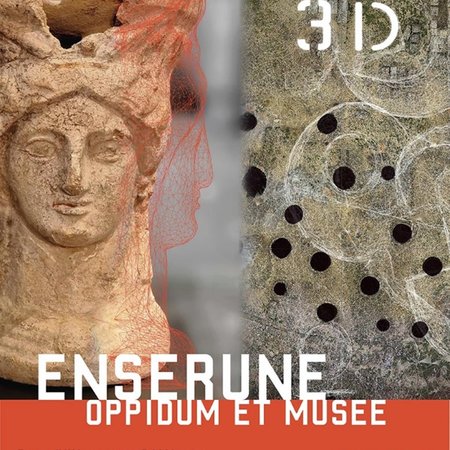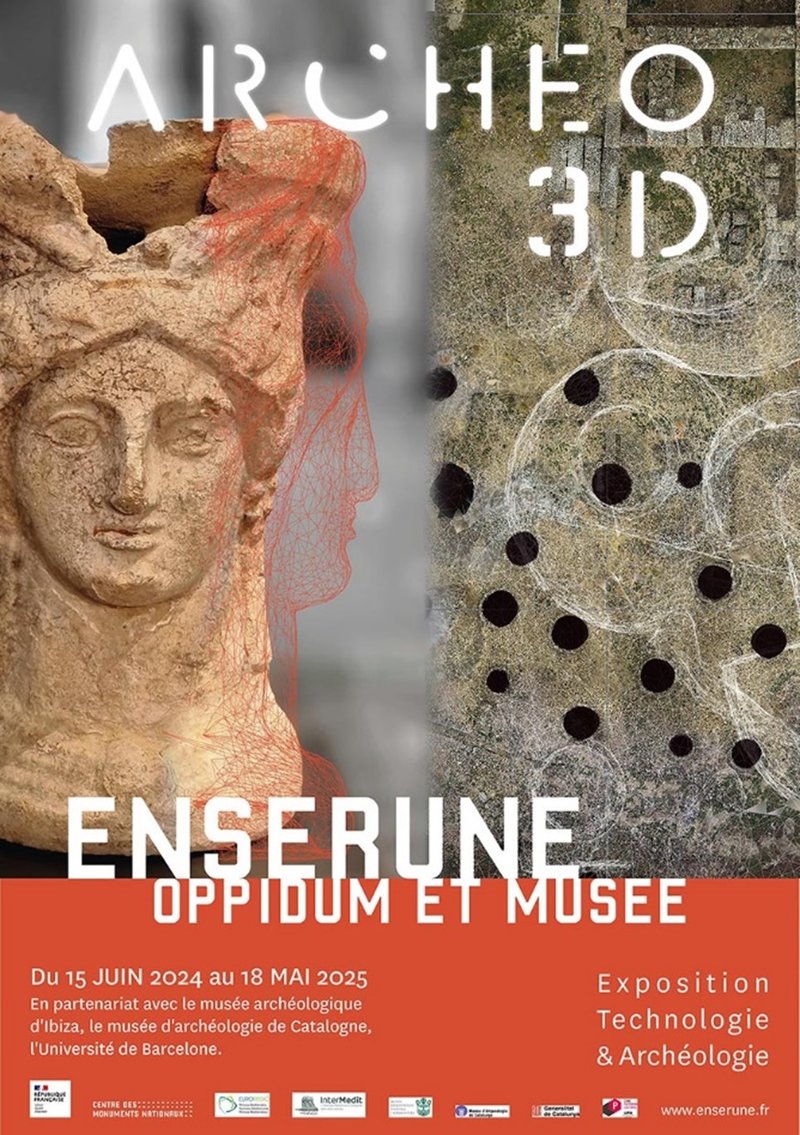
3D Archaeology, Technology & Archaeology
The Centre des monuments nationaux, in partnership with the Archaeological Museum of Ibiza and Formentera, the Archaeology Museum of Catalonia-Empúries and the University of Barcelona, is presenting the exhibition "3D Archaeology, Technology & Archaeology", from 14 June 2024 to 18 May 2025 at the Ensérune Archaeological Museum.
New digital technologies have been revolutionising modern archaeology for the last twenty years! Today, they offer a capacity for analysis and processing that opens up new prospects for research and understanding. In particular, they are opening up new opportunities for cross-border cooperation and knowledge-sharing.
The exhibition, divided into two sections, presents innovative research carried out on the Ensérune oppidum and work resulting from scientific and cultural cooperation between the three neighbouring Mediterranean regions of the Balearic Islands, Catalonia and Occitania.
The collections of the three partner archaeological museums bear witness to the communication network linking a melting pot of peoples and cultures over the course of time, and particularly during Antiquity.
The tour features a number of digital reconstructions: 10 immersive films, an interactive table and tactile 3D-printed objects.
It's a real plunge into archaeology 2.0!
A technological revolution in archaeology
Since the 2000s, archaeological research teams have made systematic use of new technologies in their approach to the field and in the study of artefacts unearthed by recent excavations or discovered more recently.
The new recording methods are now based on a wide range of computer tools coupled with innovative photography systems (lidar, scanner, ortho-photography, etc.). Not only do these new approaches allow us to take a fresh look at archaeological sites, they also open up new perspectives for archaeologists.
Thanks to 3D technology, access to the sites is simplified for all visitors - even from a distance - with an immersive approach provided by augmented reality technologies. In particular, it provides access to objects that have been buried for centuries, but have been compromised by contact with our atmosphere since they were first discovered. 3D printing offers the possibility of generating identical copies that can be handled without the risk of altering them.
Landscape studies: modelling the environment
The evolution of landscapes remains difficult to perceive today because of contemporary urban planning combined with the development of rural areas. The coastline has also changed considerably since ancient times, when the proximity of the oppidum to the Mediterranean was more obvious.
Thanks to the studies carried out by a team of specialists in earth and environmental sciences, led by Professor Jean-Loup Abbé of Toulouse University, on the dry pond at Montady, it is now possible to propose a reconstruction of this wetland.
Revealing the invisible: from excavation to digital images
Since 2017, the archaeological teams that have resumed fieldwork on the Ensérune oppidum, under the direction of Professor Philippe Boissinot of the Ecole des Hautes Etudes en Sciences sociales, have been making use of the possibilities offered by new data capture technologies.
The use of a drone equipped with a high-precision scanner means that highly accurate topographical surveys can be carried out and compared with the plans from the old excavations. One of the challenges of resuming studies of the ancient collections resulting from over a century of excavations on the oppidum is to geo-reference the discovery sites. A geographic information system (GIS) has been designed under the direction of Coline Ruiz Darasse, a researcher at the CNRS, providing an interactive database giving access to thousands of items of archaeological information about the oppidum.
The InterMedit project: Mediterranean exchanges in antiquity, a bridge between cultures
In partnership with the Archaeological Museum of Ibiza and Formentera, the Museum of Archaeology of Catalonia-Empúries and the University of Barcelona, a 3D capture of major pieces from the collections of Ibiza, Ampurias and Ensérune has been carried out with the support of the Pyrenees-Mediterranean Euroregion.
The "InterMedit, Mediterranean exchanges in Antiquity, a bridge between cultures" project offers a virtual tour of these 3 major archaeological sites via a shared website accessible in several languages: https://intermedit.eu/fr/.
The tour will be presented simultaneously in the 3 museums.
In addition, a selection of emblematic objects unearthed during the excavations at Ampurias, Ensérune and Ibiza have been scanned and reproduced using 3D printing. As a result, these objects are now tactile and easy to handle, making them accessible to all.
Practical information
Oppidum et musée archéologique d'Ensérune
34440 Nissan-lez-Ensérune
04 67 32 60 35
www.facebook.com/oppidum.enserune www.instagram.com/oppidumenserune/
Visiting arrangements
Visitors are invited to consult the website www.enserune.fr before their visit, where the visiting arrangements are updated.
Opening hours
From 1st April to 30th September
The monument is open from 9.45am to 6.30pm. Closed on Mondays.
From 1st October to 31st March
The monument is open from 9.45am to 12.30pm and from 2pm to 5.30pm. Closed on Mondays and Tuesdays.
Prices
Full price: €9
Free for under-26s who are nationals of one of the 27 countries of the European Union or legally resident in France outside the EU / Disabled persons and their accompanying adult / Jobseekers with proof of entitlement / RMI, RSA or Education Pass beneficiaries / 1st Sundays from November to March.


